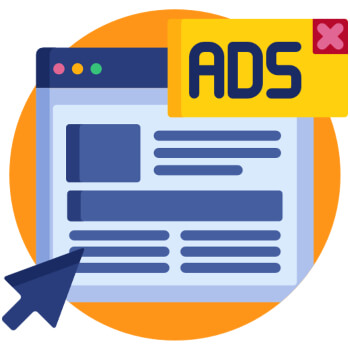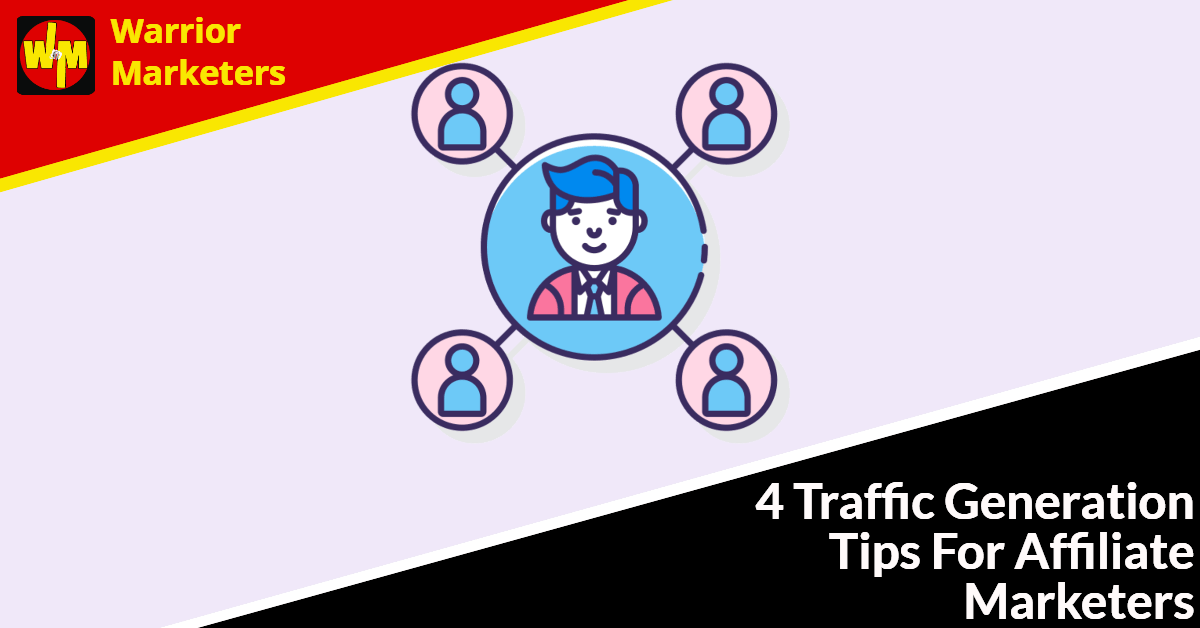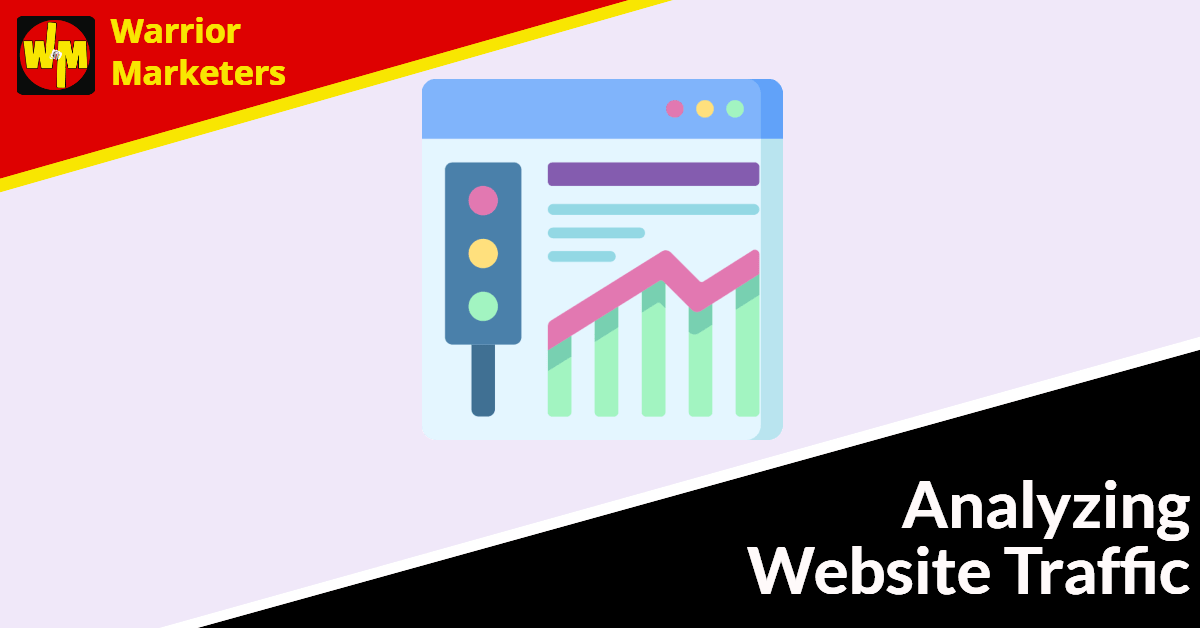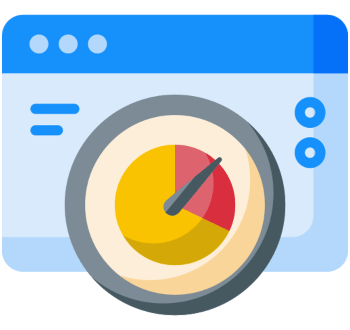Traffic
7 Steps To Optimize Your Affiliate Marketing
7 Steps To Optimize Your Affiliate Marketing

To succeed in affiliate marketing, you’ll need all the gears in your affiliate marketing ‘machine’ to be perfectly aligned so that the machine runs smoothly and generates sales like clockwork.
In order to reach this stage, there are a few factors that you must be aware of and make sure that they’re all optimized so that your marketing efforts yield the best results.
Let’s look at an effective 7 step affiliate marketing plan to get you started in the right direction.
Formulate A Plan
If you fail to plan, you’re planning to fail. Before even getting started on the content creation or buying a domain, you’ll need to assess if your niche is worth targeting.
You need to know your plan of attack and exactly what you’re going to do. That is your first step.
Research And Reach
The second step is research and reach. You must do a lot of research before diving into the niche. It’s fine to even spend a week or two doing thorough research.
If the niche you are in has a very small audience, your earning capacity will be limited. While you can still give it a try, it’s inevitable that you reach an income ceiling that you can’t seem to break through. So, be aware of this.
Traffic
Traffic is of paramount importance. The more targeted traffic you have, the more sales you’ll make.
Focus a huge chunk of your efforts on getting the right traffic to your web properties.
Content Creation And Marketing
No matter what affiliate product you’re promoting, there will be some type of content creation involved.
You could be writing blog posts or creating infographics or just pinning images on Pinterest – whatever the case, it is content creation and marketing.
Your goal should always be to help the visitor out. Avoid appearing like a rapacious marketer who only hard sells and hypes products up. It’ll just turn off most people and cost you sales.
Promoting
When you’re online, you must promote your content. Actively post your images in image sharing sites, share your videos in as many places as you can, get in front of as many crowds as you can, etc.
Guess what? Most of them are not on all 3 sites. The audiences will be different. So, by promoting your content on different platforms, you’ll reach more people.
Analyzing
Analyze your traffic stats, clicks, sales, conversions, etc. Even if numbers scare you, after a while you’ll get a hang of things.
Knowing your numbers is a crucial skill to learn for any successful entrepreneur or affiliate marketer.
Rinsing And Repeating
Last but not least, find out what’s working and keep repeating your efforts. Rinse, lather and repeat.
Follow the 7 steps above and you’ll be an affiliate marketer par excellence.
Now you have a plan, let’s look at some of the folks you will need to deal with in the world of affiliate marketing.
Who Are The 3 Types Of People Involved In Affiliate Marketing?

In your affiliate marketing journey, it’s very important to know that you’ll encounter 3 different groups of people. Knowing who they are is very important because you need to know how to deal with them.
Let’s look at the groups now.
The Publishers
The ‘publishers’ refer to affiliates just like you. These are the people who create niche sites or run YouTube channels or Facebook groups. Even the affiliates who use paid ads can be considered as publishers.
If you have a niche site on fishing tips, where you promote fishing-related products, the other sites that show up on the first page of the search results are your competition. They could be affiliates or actual brand name companies selling their products.
You’ll notice that there can be an overlap here because affiliates can sell their own products too. Let’s look at the next group to get a better picture.
The Advertisers
The ‘advertisers’ refer to the companies who create the products you promote. They recruit affiliates to do the selling and they also advertise on their own to boost their sales.
An affiliate who promotes other vendors’ products but also creates his/her own products to sell, now finds himself/herself in the advertisers group. Similarly, the company that’s selling fishing rods and publishes lots of fishing tips and content on it’s official blog is now a publisher too.
At the same time, the vendor whose products you were promoting, might end up ranking for a lot of keywords that you’re targeting, because their marketing is on point. So, the vendor you were trying to support, has now become your competition.
Alas, the tangled webs we weave! Generally, companies try not to compete with their affiliates. But if you notice that the one you’re supporting is posing competition for you, you’ll need to reassess your marketing strategy and see if you wish to still support them.
The Consumers
This group is without a doubt the most important of the three. The consumers are the people who come online looking for information and solutions to their problems. Most of them don’t come looking to spend money or buy stuff.
They want help. Your job as an affiliate marketer is to give them enough information to help them a little and whet their appetite for more information that will help them solve their problems faster and easier.
Now, not only is the visitor better informed about his condition and has a choice of home remedies that he or she can try, but they have been subtly introduced to a product that brings much needed immediate relief.
What do you think they’ll do?
Soak in that Epsom salt home bath which is a home remedy… or get the pulse massager to ease their pain quickly?
Most of them will get the pulse massager. The content you provide is a vehicle that not only helps them become better informed, but also transports them through the invisible journey that they need to traverse to go from reader to buyer.
If you want to know more about affiliate marketing check out the featured resource below for a free report; download, read it and take action 😊

Is Your Website User-Friendly For List Building?
Is Your Website User-Friendly For List Building?

When growing your list, remember that gaining more traffic is not the only goal. Attracting highly targeted traffic, full of people who want and need what you’re offering, is the goal. Therefore, you need to develop a list-growing strategy that uses tactics that focus on your goal: Building and Growing a Responsive List, because when you have that responsive list, using email for marketing becomes much easier.
So, let’s build that traffic and ensure that you have a great list that will respond to every email marketing campaign you send them.
First and foremost, everything begins and ends with your website. If your website doesn’t look great, work fast, and doesn’t work on all devices you are likely missing out on numerous opportunities to connect with potential customers.
- Develop a Responsive Website – Using a responsive template is simple today but if you add images, always double check to make sure they resize and are positioned correctly on the screen. You can check by using Browserling.com, as well as your own mobile device, and other tools.
- Brand Your Website – You don’t want your audience to be confused when they visit your website. Keep your branding the same throughout your online real estate, from social media to your website, and everything in between. You can do this by using logos, fonts, colors, etc., to develop your branding so everything matches.
- Make it Easy to Contact You – You don’t want someone to have to dig around your website to find a way to contact you. Make it very easy by placing the contact info at the top and bottom of your site, as well as in the sidebar (if you have one). Visitors should be able to contact you easily, when needed.
- Create Simple Navigation – The rule of thumb with navigation is that less is more. Plan your navigation in advance to help create the right setup. Use labels on the navigation links that adequately identify what they’ll find there. Make sure your primary navigation stands out. This menu is usually at the top of every page of your website. Always link the logo to the home page so no one gets lost.
- Ensure it Loads Fast – A slow loading site is a traffic killer. In most cases, if your site takes longer than .8 seconds to load people will leave. Consider using a content delivery network (CDN). Use the right image formats and sizes, browser caching, fewer plugins, enable compression, the right web host, and more.
Making their wants and needs top priority helps to ensure you build a user-friendly website that people want to visit.
Know Your Audience & Your Competition

Before you start building or changing your site, get to know your target audience and your competition. You can only make informed decisions if you are well informed. It’s hard to create products, services, or content for your target market, if you don’t know what they want and need.
- Conduct Research – There are many ways to do research. You can look at the analytics you already have, but you can also do research using government databases such as the United States Census Bureau to compile information about your audience. Not only should you study your audience, study your competitors too.
- Develop Customer Personas – This involves creating a profile of your ideal customer. Find an image of how your imagined customer looks. In the profile, include personality traits, education, family life, career, income, and other details needed to develop content, products, and services.
- Monitor Social Comments – Whether a comment is on a blog or on social media networks, finding comments from your audience can help you learn more about them. Engagement on social media within groups is usually more trustworthy because they tend to ask honest, straight forward, questions.
- Conduct a Survey – When you know your competition well, you can develop a survey, which targets that audience. This helps you discover what they want and need. You can use Facebook Ads to market the survey, which lives on your website. Learning about your competitor’s audience can help you, if you have the same or a similar target market.
- Engage Often – The more you engage with your audience the better. Keep your email open to replies, invite questions, and answer questions, as they come. The more open you are the more open they will be. This is especially true if they feel you truly listen and appreciate their input.
That’s why you need to look at the data, pay attention to what your competition is doing, and keep your ear to the ground, regarding your entire industry to stay on top of what’s coming next.
Participate On Social Media

Social media can be very beneficial, as you build your opt-in traffic and mailing list. Since you need to be “social” and build relationships anyway, you may as well get the most out of your efforts. Let’s look at how you can use social media to drive traffic and grow your mailing list.
- Build a Facebook Group – Social media is the perfect place to build a community. Create a niche group, where you can promote your freebies, content, and products. Link your business page and your related group. In your profiles, include a link to your website and/or your main opt-in page. In your group, get the group’s thoughts on your “new” website content and discuss the nuances. You’ll also want to do live events. Weekly live events can really boost traffic to your business page, the group, your website, and your mailing list.
- Monitor Comments – Don’t allow comments to go unnoticed. Sometimes you only need to acknowledge that you read it. Other times, you should respond in more depth. Try to keep everything positive and be yourself. Being authentic on social media is important to building trust. Answering questions and linking to your “helpful resource” allows you to establish your expertise and build trust.
- Share Your Freebies – Share your freebies directly or indirectly in your group. Indirect sharing might be done via sharing blog posts, where the opt-in is. Members only items may be added directly to the group area. Every page of your website should offer a way to share the content blurb and link.
- Engage Your Audience – Post questions and information that makes your audience think. On Facebook or YouTube, use Live Q & A events to engage with your audience. Post polls, quizzes, and other interactive information help to encourage engagement.
- Use Amazing Visuals – Social media posts with visuals get more response than social media posts without images. Use the right type of visual to get your audience’s attention and make the post more interesting to your target market.
- Make Content Shareable – Everything you post needs to be easy to share. Don’t restrict sharing. In fact, ask people to share your content and thank them when they do. Sometimes a little reminder is all that’s needed to get people involved.
I hope these list building and email marketing tips have been useful. If you want to know more about email marketing, check out the featured resource below where you can get a free report about simple list building to expand your knowledge further. If you do download it, please read it and take action and good luck 😊

Can You Really Make Money By Blogging?
Can You Really Make Money By Blogging?

Blogging has been around for a long time on the Internet. It started out as a creative outlet for people to take their personal journals online to share with family and friends.
It branched out into outlets of information to be shared by experts and now people use them for a money-making opportunity.
Millions of people visit blogs every day for information or entertainment purposes. A lot of the blog visitors are ones that come back to check in on the latest entries into a blogger’s world.
They link their blog to your blog, which increases your reader base. The blog’s traffic becomes so huge that your chances for earning increase. Using AdSense ads are the most popular way to generate income from your blog.
By strategically placing the ads on the blog, you can entice visitors to click on them, with each click earning you a share of the profits Google takes in. While a couple of clicks earn you very little, a high flow of traffic and clicks earns you a substantial amount.
To make a lot of money with AdSense, you have to drive traffic to the blog. The most important concept with AdSense is to remember that you have to make the ads visible and not hidden somewhere in the blog where they can’t be seen. The more people who click away, the more money you’ll make.
Another way some people make money from their blogs is by using advertisement space. Advertisers scramble to place one of their banners on the more popular blogs. They’re willing to pay you based on the traffic numbers you generate and the prime space available within your blog.
There are many ways you can monetize ad space. You might charge a flat fee, take a commission based on the number of click-throughs, or make a deal where you get a percentage of the sale of a product, much like an affiliate marketer does.
Choose a topic that has a high number of searches, launch a free blog at Blogger.com or WordPress.com, and strategically implement your ads and offers to start seeing a steady income build over time.
However, if you want to take blogging seriously, you need to consider paying for hosting and a domain name and using WordPress.org because you will have much more control over your blog and this is critical for your success in the long run if you are thinking about using your blog as a serious money maker.
Now you have your blog up and running, you need to get traffic to it and spread the word about it and there are a number of ways to do that.
Where To Advertise Your Blog For The Best Results

Getting your blog set up is the easy part of the process. Now comes the difficult part – getting visitors! You need to find traffic to come to your blog or it won’t be a profitable investment of your time.
Start with the free options and as you begin to see a return on your investment of time, you can invest some profits back into marketing your blog with paid options.
Free
- Join message board communities. This is a simple way to advertise your blog. Interact with your fellow users and advertise your blog in your signature line, if it’s allowed. If it’s not allowed, there’s usually a folder available within that forum that does allow you to advertise your sites. Use them.
- Join a social networking site. These sites are a good way to network with like-minded people who are interested in the same subject your blog is about. Join the community and get to know the other members and then you can supply them with a link to your blog. Many in social networking circles provide cross-promotions, so you’ll probably accumulate a lot of valuable backlinks to your blog.
- Utilize social bookmarking sites. Write a great thought provoking post on your blog and submit it to sites like Digg.com or del.icio.us. There are hundreds of people who spend hours at these sites searching for good websites to check out. Your blog can get a surge of traffic through this strategic and viral sharing method.
- Join a blogging community like BlogEngage (Paid) or DoSplash. This offers you a way of connecting with other bloggers who may do a review of your blog on theirs, which would help drive more traffic to your site.
Paid
- Use advertising campaigns like Google AdWords. Place an ad on the search engine result pages and pay only when someone clicks on the link. Make sure you use the best keywords to get the ad noticed, so that you can drive more traffic to your blog.
- Use text link advertising. Contact some of the more popular blogs in your niche and see if they would be willing to sell you some advertising space through text links. If the price is right, take the chance to have traffic driven to your site from theirs. Not all sites will be willing to do this, so keep trying different ones until you get one to say yes.
And remember, if you want a premium training on blogging the right way, check out the Rapid Blogging Blueprint which includes over the shoulder training on blogging the right way.
Or, if you just want some more basics to see whether blogging is right for you, check out the featured resource below for a free Blogging Fundamentals report; download, read it and take action 😊

4 Traffic Generation Tips For Affiliate Marketers
4 Traffic Generation Tips For Affiliate Marketers

So you are interested in affiliate marketing. That’s great because it is a relatively quick, virtually risk-free way to start making money online.
Let’s quickly explain affiliate marketing for beginners in case you are unsure of how it works.
As an affiliate marketer, you’re acting like a salesperson for the company. You sign up for their affiliate program, help to make a sale, and then the company rewards you.
The best thing about affiliate marketing is that it is incredibly scalable. A typical salesperson will only sell products from one company, or their own products and services. As an affiliate marketer, you can promote products from many different sources and earn commissions from all of them.
Many people try to start with Amazon affiliate marketing because Amazon is such a large, household name. The problem is that their affiliate commissions are tiny compared to other affiliate programs. Don’t rule Amazon out but you need to have realistic expectations when using it.
How much money can you make as an affiliate marketer? Well, the possibilities are endless, and the top performers are easily making 6-7 figure incomes online, and best of all, they don’t have to create or support their own products.
There are many affiliate platforms and programs that you can apply to join depending on your niche.
And on the topic of traffic…
As an affiliate marketer, it’s crucial that you know how to drive traffic to your offers. This is a skill that will make or break you. So, you’ll to need to devote a huge chunk of your time in the beginning to learning how to drive traffic. While simple in concept, it’s not entirely easy and will require effort on your part.
Unlike product creators who can rely on affiliates to drive traffic, as an affiliate, you can only count on yourself. The traffic you generate can either be from free methods or paid traffic.
If you have the budget for it, you can use paid traffic. It’s faster and you get feedback much quicker. You have complete control of targeting so you will know who sees your ads and if you get your targeting right, you should be able to break even on your ad spend on your front end offers.
However, if you’re a beginner and short on funds, there are many free methods of traffic generation that are effective too. The term ‘free’ is deceptive because you’ll be paying for it in time and effort, and you must be patient before you see any noticeable results; this may be frustrating, but you need to understand this from the beginning!
Nevertheless, you can drive free traffic and still make sales if you know what to do. Below you’ll find a few tips that you should always bear in mind when driving traffic.
Know Where Your Audience Hangs Out

You must know where your niche audience hangs out. If it’s a bodybuilding crowd you’re targeting, they’ll probably be on bodybuilding forums, fan pages for bodybuilders, YouTube channels featuring fitness experts and so on. So, you can go into these places and start siphoning traffic from there to your sites.
It is important to know who your target market is and what they are looking for. This is so often overlooked by marketers of all persuasions because it isn’t the most interesting thing to do, but it is one of the most important!
If you know who they are, what they want and their specific pain points, you will be much more successful in gaining the sale.
Start With One Method

The reason so many marketers never do well with traffic is because they never focus their efforts on one method. If you’re going with video marketing, create a good channel and keep making videos till you have a following. Learn how to optimize your channel and videos so that you rank.
If you are blogging, learn to write interesting and engaging posts that are crammed with helpful information that your readers will enjoy and appreciate. Be consistent and write often. Don’t write short posts but instead go for longer posts that can go into more detail (a 1000 word minimum is a good benchmark to aim for). Learn about SEO so you can get your blog posts ranked in the search engines.
Pick one traffic method and strive to master it until you have an avalanche of traffic coming to your sites, etc. Once that’s successful, you can move on to the next traffic method while maintaining the current one.
Repeated And Relentless Effort

Driving traffic is a continuous process. Keep repeating your efforts and never give up. Even if your first few videos have only 10 or 20 views, keep going. Over time you will get more views and a bigger audience.
The same applies to most traffic methods. The more videos you have, the more traffic you’ll get. The more people in your Facebook group, the more comments and engagement you’ll get. The more blog posts you write, the more visitors will come to your website. The more paid ads you create, the higher your chances of finding winning campaigns. It’s all a matter of time and repeated effort.
Engagement

This is another important factor. Engage with your traffic. Reply to comments on your videos. Like and respond to comments in your Facebook groups and ads. If you have commenting enabled on your blog and someone takes the time to comment, reply to them and thank them for taking the time to comment.
Remember these pointers when driving traffic. It’s not as difficult as most marketers make it out to be. Once you understand how it works and you’re consistent, you will see results. The key to traffic generation is consistency. That’s where most marketers fail.
Get this right and you’ll have all the traffic you want.
Once you have started to make progress you can rinse and repeat with another traffic method.
If you want to know more affiliate marketing, then check out the featured resource below for a free Affiliate Marketing Machine report which complements this post perfectly; download, read it and take action 😊

Analyzing Website Traffic

Analyzing your web traffic statistics can be an invaluable tool for a number of different reasons. But before you can make full use of this tool, you need to understand how to interpret the data.
However, the data you receive from your host company can be overwhelming if you don’t understand how to apply it to your particular business and website. Let’s start by examining the most basic data – the average visitors to your site on a daily, weekly, and monthly basis.
Monitor Average Visitors

These figures are the most accurate measure of your website’s activity. It would appear on the surface that the more traffic you see recorded, the better you can assume your website is doing, but this is an inaccurate perception.
You must also look at the behavior of your visitors once they come to your website to accurately gauge the effectiveness of your site.
If you think about the fact that a hit can simply equate to the number of graphics per page, you will get an idea of how overblown the concept of hits can be.
For example, if your homepage has 15 graphics on it, the server records this as 15 hits, when in reality we are talking about a single visitor checking out a single page on your site. As you can see, hits are not useful in analyzing your website traffic.
The more visitors that come to your website, the more accurate your interpretation will become. The greater the traffic is to your website, the more precise your analysis will be of overall trends in visitor behavior. The smaller the number of visitors, the more a few anomalous visitors can distort the analysis.
Monitor Time Spent On Site

The aim is to use the web traffic statistics to figure out how well or how poorly your site is working for your visitors. One way to determine this is to find out how long on average your visitors spend on your site.
It could be that your keywords are directing the wrong type of visitors to your website, or that your graphics are confusing or intimidating, causing the visitor to exit rapidly.
Use the knowledge of how much time visitors are spending on your site to pinpoint specific problems, and after you fix those problems, continue to use time spent as a gauge of how effective your fix has been.
Monitor Page Performance

Additionally, web traffic stats can help you determine effective and ineffective areas of your website. If you have a page that you believe is important, but visitors are exiting it rapidly, that page needs attention.
You could, for example, consider improving the link to this page by making the link more noticeable and enticing, or you could improve the look of the page or the ease that your visitors can access the necessary information on that page.
As you can see, these statistics will reveal vital information about the effectiveness of individual pages, and visitor habits and motivation.
This is essential information to any successful Internet marketing campaign.
Monitor Exit Pages

Your website undoubtedly has exit pages, such as a final order or contact form. This is a page you can expect your visitor to exit rapidly. However, not every visitor to your site is going to find exactly what he or she is looking for, so statistics may show you a number of different exit pages.
Once you pinpoint potential weaknesses on that page, minor modifications in content or graphic may have a significant impact on the keeping visitors moving through your site instead of exiting at the wrong page.
Monitor Keywords

After you have analyzed your visitor statistics, it’s time to turn to your keywords and phrases. Notice if particular keywords are directing a specific type of visitor to your site. The more targeted the visitor – meaning that they find what they are looking for on your site, and even better, fill out your contact form or make a purchase – the more valuable that keyword is.
However, if you find a large number of visitors are being directed – or should I say misdirected – to your site by a particular keyword or phrase, that keyword demands adjustment. Keywords are vital to bringing quality visitors to your site who are ready to do business with you.
Finally, if you notice that users are finding your website by typing in your company name, break open the champagne! It means you have achieved a significant level of brand recognition, and this is a sure sign of burgeoning success.
As you can see, measuring website traffic can be difficult to do accurately as it is as much an art as it is a science, but it can at least give you a rough idea of how your website is performing so it is well worth the effort to investigate.
And if you want to learn more about converting those visitors into opt-ins and sales, then check out the featured resource below where you can download a free Conversion Boost report; download, read it and take action 😊










